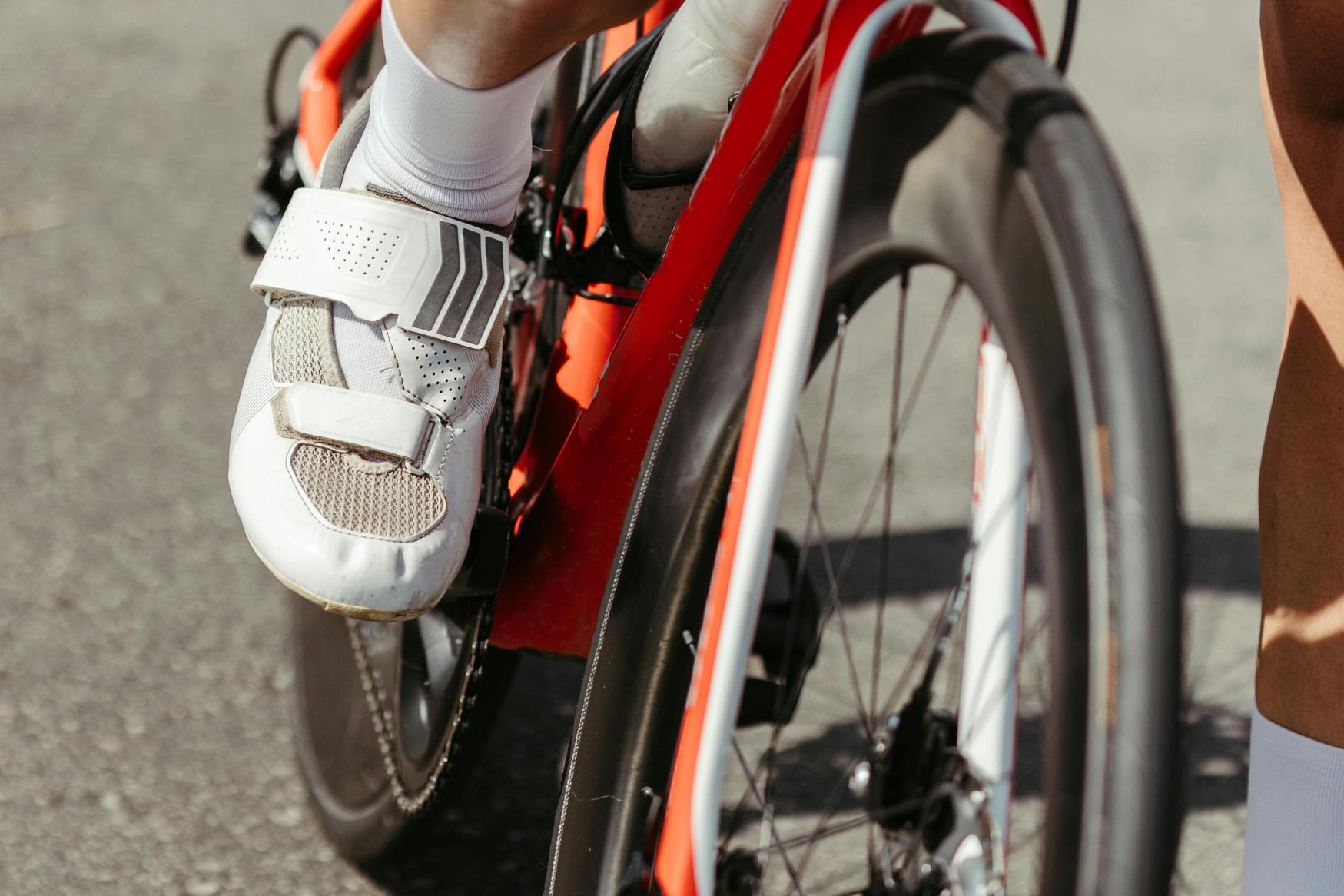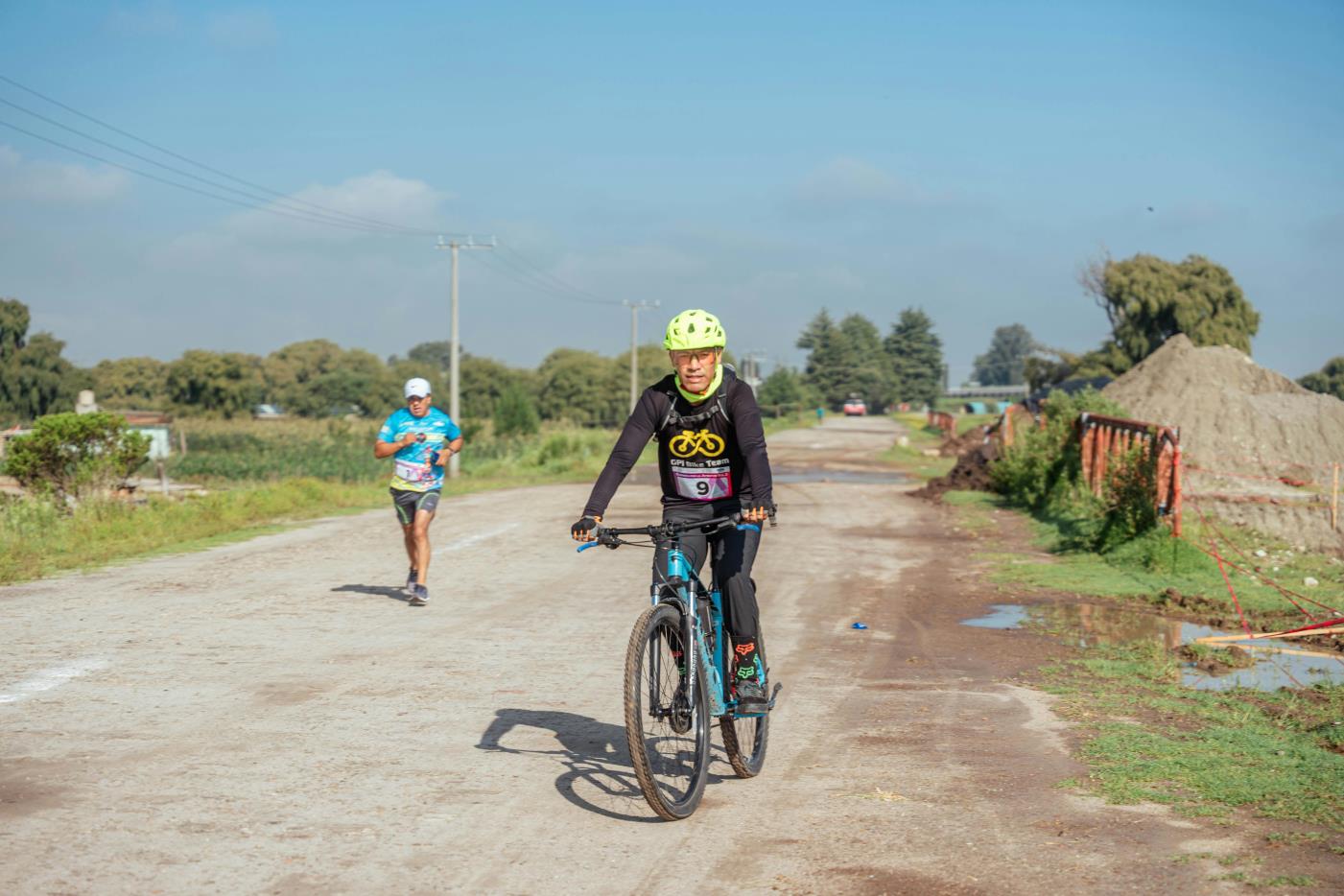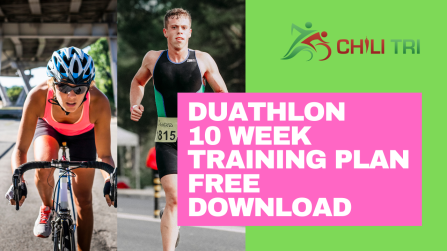Free 10-week duathlon training plan for ChiliTri
 Karen Parnell
November 17, 2024
Karen Parnell
November 17, 2024
Free 10-week duathlon training plan from ChiliTri
This 10-week training plan is intended if for are keeping your race season alive and taking on the challenge of a standard / Olympic distance duathlon (10km run/40km bike/5km run).
Training for duathlon is a great test for triathletes and will help your keep your hard-earned running and cycling fitness. I have done both on road and off-road duathlons and can honestly say they are tough! (but fun).
Duathlons are ideal if you want to keep racing during the autumn and winter months.
The plan includes running and cycling sessions plus strength training to help you keep injury free. I’ve also included Brick sessions (Bike to Run, back-to-back) to simulate your race conditions.
If you are relatively new to strength training your can download your free guide to strength training.
Monday is set as a recovery day to help your body absorb and recover from the training sessions. Vary the routes where you do longer and steadier bike and run sessions, and always include a warm-down after each training sessions with some stretching or foam rolling.
Choose routes that are like your chosen race so on race day you are fully prepared.

Photo by Jonathan Borba
Train for Your Duathlon with a 10-Week Training Plan
If you’re aiming to cross the duathlon finish line this October or November, setting aside a minimum of 10 weeks for training is well worth the investment.
Even as triathlon season wraps up, you can stay in top shape by shifting your focus to the duathlon circuit. This approach helps maintain your running and biking fitness and keeps you race-ready!
Benefits of Off-Season Duathlon Training
For many well-conditioned athletes, training through the triathlon off-season with duathlons is a strategic way to stay sharp and focused. Duathlons demand high endurance, often matching triathlons in total duration and, for some, feeling even more challenging due to the back-to-back run-bike-run structure.
This 10-week duathlon training plan is designed for those who have completed a sprint-distance triathlon or standalone 10km run and 40km bike. Familiarity with these distances helps ensure you’re prepared for the demands of training sessions to come.

Photo by Pexels LATAM
Get your FREE Guide to Running Speed and Technique
How to Pace Your Duathlon: Key Training Strategies
This training plan emphasizes the importance of balanced stamina and speed through a mix of longer aerobic sessions and shorter, high-intensity intervals. After all, the best way to race faster is to train faster! But this plan keeps mind an 80/20 structure where 80% of your time is low intensity and 20% is high intensity which is proven to be very effective by professional and age group athletes and can help avoid injuries.
A successful duathlon relies heavily on pacing, especially for the first run, so you’ll still have energy left for a strong final 5km. This plan includes Brick sessions (Bike to Run – but you can also flip them to run to bike and even add a short run before your bike to run bricks) helping you fine-tune race pace (RP), improve transitions and simulate race conditions.
These Brick workouts build speed and provide crucial transition practice. You can complete these sessions indoors to maximize transition efficiency and it’s also a good option if the weather is poor outside.
So, ditch the wetsuit, lace up those running shoes, lube up your bike chain and get ready to tackle the duathlon like a pro!

Photo by RUN 4 FFWPU
Duathlon Training Tips for Success
- Stretch to Stay Solid: Build flexibility and mobility to help prevent injury with a post-run stretching routines after each workout. New to mobility? Grab your free mobility challenge.
- Prioritize Brick Workouts: Make the most of varied brick sessions in your plan. These sessions prepare you for race day and help improve your pacing.
- Smart Pacing: Avoid overexerting on the first run; manage your pace so you have enough strength for a solid finish – maybe even a sprint finish and big smile for the camera?
- Practice Your Nutrition: Nutrition for duathlons differs from triathlons, so experiment with your fuelling strategy during training for optimal performance on race day.
Knowing your macros can help – calculate them here.
If you would like some ideas for healthy recipes we have free recipe books.
Ready to dive in to Your Duathlon Training Plan?
Download the 10-week duathlon training plan below and start building your best season yet!
Find more triathlon training plans, for every ability and distance.
If you need a longer duathlon plan or a different distance you can find plans on:

Karen Parnell is a Level 3 British Triathlon and IRONMAN Certified Coach, 8020 Endurance Certified Coach, WOWSA Level 3 open water swimming coach and NASM Personal Trainer and Sports Technology Writer.
Karen is currently studying for an MSc in Sports Performance Coaching at the University of Stirling.
Need a training plan? I have plans on TrainingPeaks and FinalSurge:
I also coach a very small number of athletes one to one for all triathlon and multi-sport distances, open water swimming events and running races, email me for details and availability. Karen.parnell@chilitri.com
Duathlon FAQ: Essential Tips for Racing Success
1. What is a duathlon, and how is it different from a triathlon?
A duathlon is a multisport race that includes two running segments with a biking segment in between, typically structured as run-bike-run. Unlike a triathlon, it skips the swim portion, making it ideal for athletes who prefer to focus on running and cycling.
2. What are the common duathlon race distances?
Duathlons come in various distances to suit athletes of all levels, from beginners to advanced competitors. Here are some common duathlon distances:
- Sprint Duathlon: 5km run – 20km bike – 2.5km run
- Standard/Olympic Duathlon: 10km run – 40km bike – 5km run
- Middle Distance Duathlon: 10km run – 60km bike – 10km run
- Long Distance Duathlon: 10-15km run – 60-150km bike – 10-15km run
Each race type offers unique challenges, and choosing the right distance often depends on your experience and fitness level. Sprint duathlons are great for beginners, while standard and long-distance races provide more advanced athletes with a greater test of endurance.
3. How should I pace myself in a duathlon?
Effective pacing is essential for a strong duathlon finish. Start with a controlled pace on the first run—think of it as setting a sustainable rhythm rather than going all-out. This approach ensures you’ll still have the energy to push through the bike leg and finish the final run segment strong. Try to "Pace to Perform" by saving your maximum effort for the last segment.
4. What is a brick workout, and why are they important?
A brick workout involves back-to-back training sessions that mimic the race format, such as a run followed immediately by a bike ride or vice versa. These sessions are crucial for building endurance, practicing transitions, and preparing your legs for the shift between running and biking. Consistent brick workouts help you avoid "jelly legs" when transitioning from one discipline to the next.
5. How can I improve my transition times in a duathlon?
Transitions are a hidden gem for gaining time in a duathlon. Here are some tips to speed up your transitions:
- Set up your gear efficiently: Place your bike, helmet, and running shoes in an easy-to-access layout.
- Practice fast transitions: Rehearse getting in and out of running shoes, mounting and dismounting your bike, and switching gear quickly.
- Stay calm and focused: Transitions can feel hectic, but staying composed helps prevent mistakes.
6. How should I approach nutrition for a duathlon?
Nutrition for a duathlon varies from triathlon since there’s no swim, but energy demands are still high. Here are some fuelling tips:
- Pre-race meal: Consume a balanced meal 2–3 hours before the race, focusing on carbs and moderate protein.
- During the race: For sprint distances, you may only need water or an electrolyte drink on the bike leg. For longer distances, consider an energy gel or sports drink for additional fuel.
- Hydrate smartly: Sip water or a sports drink during transitions or on the bike to stay hydrated without overloading.
7. What gear do I need for a duathlon?
Essentials for a duathlon include:
- Running shoes: Consider a pair with good cushioning and support for both run segments.
- A road or triathlon bike: Choose a bike you’re comfortable riding at a consistent pace.
- Cycling helmet: Mandatory for safety, so make sure it’s properly fitted.
- Sunglasses and hydration gear: Protect your eyes and stay hydrated throughout the race.
8. What’s the best way to train for the final run segment?
The last run can be the toughest part of the duathlon. Here’s how to train for a strong finish:
- Focus on brick workouts: Regular run-bike-run sessions prepare your body for the fatigue of the final leg.
- Practice negative splits: Start the second run at a moderate pace and gradually increase your speed, simulating race-day pacing.
- Work on mental endurance: Visualize a strong finish during your training runs to build confidence for race day.
9. How should I recover after a duathlon?
Recovery is essential to avoid injury and optimize your next race performance:
- Cool down properly: After the race, take a few minutes to walk and stretch to ease muscle tension.
- Refuel within 30 minutes: Eat a snack with protein and carbs to replenish energy stores and aid muscle repair.
- Hydrate and rest: Drink water, take a day or two off from intense training, and focus on sleep to allow your body to recover.
With these FAQs and tips, you’re well on your way to a successful and enjoyable duathlon experience!


